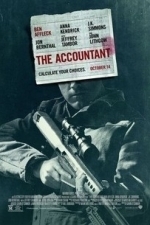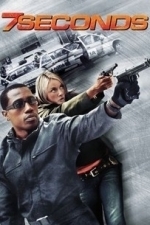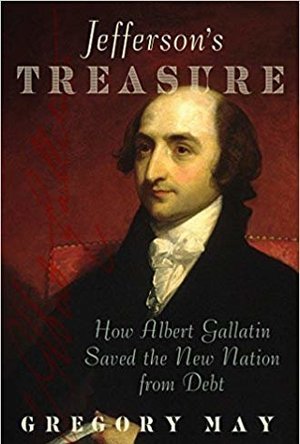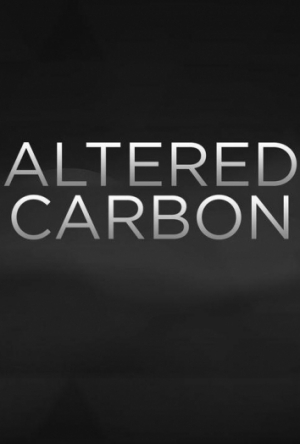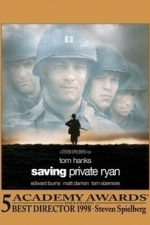Gareth von Kallenbach (980 KP) rated The Accountant (2016) in Movies
Jun 19, 2019
In the new film “The Accountant” we are introduced to Christian as he prepares taxes for a rural couple. The quiet, and social awkward man is a whizz with numbers but thanks to a form of Autism, Christian is socially awkward and has an extreme series of regiments he uses to cope with the modern world.
Much of his life is told through flashbacks but we learn that his military father insisted that he and his brother learn to defend themselves after their mother left them.
FBI agent Ray King (J.K. Simmons) is facing retirement and has past history with The Accountant as he is known, and wants to resolve the situation before he retires. As such he recruits and coerces a young agent to help him track down The Accountant with little more to go on other than reputation and some vague photos.
At the same time Christian is introduced to a company via his service who suspects that money is being stolen from them. The C.E.O. Lamar Black (John Lithgow), is eager to get to the bottom of an irregularity found by bookkeeper Dana Cummings (Anna Kendrick).
Christian tears through 15 years of books in one night and locates an intricate scheme to steal millions yet make the company look like it has kept gaining money and this sets into action a chain of events with dire consequences.
At the same time, a mysterious man (John Bernthal), is eliminating those in the way and has set his sights on both Christian and Dana.
Christian however is far from a weak pacifist as thanks to his work and his father’s training, he is brutally efficient and deadly with his hands, feet, and all manner of weapons.
With danger all around them, Christian and Dana must survive and get to the bottom of the mystery while avoiding Agent King and the authorities.
What follows is an action filled thriller that was an exciting adventure filled with twists, turns, and solid performances.
The film does offer a big twist which I saw coming 40 minutes out, but despite this the solid cast and great work by Affleck, Simmons, and company make this a pleasant surprise and one you will not want to miss.
http://sknr.net/2016/10/14/the-accountant/
Darren (1599 KP) rated 7 Seconds (2005) in Movies
Jun 20, 2019
Actor Review: Wesley Snipes – Jack Tuliver thief who is also ex-delta force who arranges a heist that he gets double crossed on and left to find out by whom. Snipes’ gets some good one-liners and really is the only good thing about this film. (6/10)
snipes
Actor Review: Tamzin Outhwaite – Sgt Kelly Anders a military Police officer who somehow gets caught up in the middle of the event but is the only one with brains. Awful performance she really should have stuck to the soaps. (2/10)
tamzin
Actor Review: Deobia Oparei – Spanky when things are going his way he is all talk but when it’s not he runs and hides. Funny character, but in the end a waste of use of the actors potential talent. (4/10)
spanky
Actor Review: Georgina Rylance – Suza, Jack’s partner in the crime but gets kidnapped leading him to try his best to save her. Simple support role that doesn’t get a chance to do much. (4/10)
suza
Actor Review: Peter Lee-Wilson – Alexsie Kutchinov the gangster who wants the heist prize and will do anything in his power to get it. Good performance as he gets to use the characters disability well. (6/10)
alex
Director Review: Simon Fellows – Can tell a known thinking man’s action thriller well but doesn’t try anything new. (5/10)
Action: The car chases work well, and some fights are good. (7/10)
Crime: Simple crime side to the story. (5/10)
Thriller: Doesn’t really get you routing for anyone or anywhere near the edge of the seat. (5/10)
Believability: No (0/10)
Chances of Tears: No (0/10)
Settings: Set in Romania we get some good settings and look at the city. (8/10)
Suggestion: This is one that is really just for late night TV viewing any other time would be waste of time and money. (Late Night)
Best Part: Car chase one
Worst Part: The Police
Action Scene Of The Film: Car chase
Kill Of The Film: Some the of henchmen
Oscar Chances: No
Chances of Sequel: No
Overall: Crime Caper With No Brains Required
https://moviesreview101.com/2014/07/22/7-seconds-2005/

Deng Xiaoping: A Revolutionary Life
Alexander V. Pantsov and Steven I. Levine
Book
Deng Xiaoping joined the Chinese Communist movement as a youth and rose in its ranks to become an...
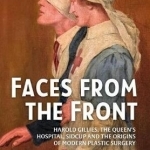
Faces from the Front: Harold Gillies, the Queen's Hospital, Sidcup and the Origins of Modern Plastic Surgery
Book
Faces from the Front examines the British response to the huge number of soldiers who incurred...
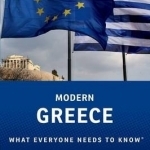
Modern Greece: What Everyone Needs to Know
Book
Just a few years ago, Greece appeared to be a politically secure nation with a healthy economy....

The War of the Worlds by H. G. Wells
Podcast
Extraterrestrial invasion, the earth taken over by omniscient intelligences from Mars, the whole of...
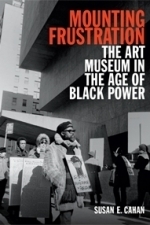
Mounting Frustration: The Art Museum in the Age of Black Power
Book
Prior to 1967 fewer than a dozen museum exhibitions had featured the work of African American...
Art social issues politics
Sassy Brit (97 KP) rated Jefferson's Treasure: How Albert Gallatin Saved the New Nation from Debt in Books
Jun 5, 2019
So who was this man that undid Alexander Hamilton’s fiscal system, rejecting it along with Madison and Jefferson? Because both Presidents did not understand the financial system, they depended on Gallatin to reform it. Gallatin arrived in America in 1790 from Geneva and rose up to become a trusted advisor of the Republicans. Six years before Jefferson was elected President, Gallatin’s Pennsylvania neighbors rebelled against the tax on whiskey. He supported them in principle but opposed the violence that ensued, burning the local tax collector’s house, robbing the mail, and marching on Pittsburgh.
The play “Hamilton” uses revisionist history. The real Hamilton believed in big government and wanted to continue funding federal deficits. He based his theories on the British who used the money to fund their large military conflicts, believing that the ability to borrow endless amounts of money would allow the new United States to become a great nation. Jefferson and Madison thought Hamilton’s system, straight from the British way, was tainted with tyranny. As May noted, “It made the people pay obnoxious taxes in order to fund interest payments on a mounting federal debt and the costs of an expensive military establishment. It shifted money from ordinary taxpayers to the relatively few rich men who held the government’s bonds. That was just the sort of thing that had led Americans to revolt against Britain in the first place.”
May believes, “The hip-hop immigrant hero of the Broadway musical is a myth. The musical might be a great work of art, but is relies on misconceptions of Hamilton. He was not an immigrant, but a migrant within the British Empire. Also, he was not a man of the people, as Gallatin was, but an elitist.”
While Hamilton committed to paying only the interest on the government’s debt, Gallatin committed the government to repaying fixed amounts of the principal each year. He also insisted that the government should never spend more than it earned except in times of war. By slashing federal expenses, Gallatin was able to get rid of the tax on whiskey and abolish the entire internal revenue service.
The Republicans, an agrarian society, distrusted these elitists where two-thirds of the government debt belonged to a few hundred very wealthy men residing mainly in Philadelphia, New York, and other mercantile cities. They saw Hamilton’s plan of collecting taxes from ordinary citizens as a way for a few rich men to become even wealthier. Implementing these excise taxes required government officials to inspect, quantify, and mark the items subject to tax.
The Hamilton system benefited the wealthy debt holders and spectators at the expense of the average taxpayer who had to pay the interest. The government would borrow more than the people could pay. Hamilton tried to hide how much money the government was actually spending and spiraled the debt higher and higher.
This was an important part of the British tax base, and “I wanted to show how unpopular it was. Hamilton and company were resented because they created a tax collection network that affected the lives of ordinary citizens. The excise tax is a form of internal taxation, while tariffs are a form of external taxation that fell on the well to do. Remember mostly the well to do bought imports. The Republicans once they came to power relied on import duties rather than excise taxes.”
May further explained, “When Jefferson and his administration came to power it was Gallatin who got rid of Hamilton’s deficit finance system and cut taxes. By the time he has left office he has repaid half the federal debt and set up a program for repaying the rest.”
Anyone who wants to understand the early economic systems of the Founding Fathers will enjoy this book. It shows how Gallatin, by killing Hamilton’s financial system, abolished internal revenue taxes in peacetime, slashed federal spending, and repaid half of the national debt.
Steph Freeman (26 KP) rated Altered Carbon in TV
Feb 19, 2018
The lack of regard for anyone below them (literally as well as figuratively) makes it easy to hate the Meths and the decadence that surrounds them. Their wealth allows a god-like immortality, and a lack of respect for life and "real death". Kovacs was detained for crimes against the Protectorate and his stack placed "on ice" for 250 years until the meth Laurens Bancroft pays for his release and a new skin. As Kovacs accepts the offer to find Bancrofts murder, and as he searches for the killer he finds friendship in an AI Edgar Allen Poe (one of the best characters in the whole show), a former military drunk and his wife and daughter, who is damaged emotionally trapped in virtual life, and a police officer. There are also several people after Elias Ryker (a police officer who was a little too curious), which causes issue for Kovacs because that is the skin Bancroft selected when he was taken off ice.
The locked room mystery portion of the season ends in episode 7, but that is far from the end of the action. As we learn more about Kovacs' history his interest in the Envoy mission of recapturing humanity and forcing real death on the world is made more evident, as is his love for Quell. His sister, Rei, did not believe in the mission as much as spending eternity with her big brother. While Kovacs was on ice his sister built a meth empire, acquiring wealth and power, becoming everything Quell and Kovacs fought against. The final moments with his sister, and his decision to find Quell's stack were gripping.
The cinematography, costuming, and CGI in this show are phenomenal, and the attention to detail is obvious. As Netflix is transitioning to big budget productions it's clear they have the right people handling the decisions. I didn't realize this series was also a book trilogy written by Richard Morgan, this series has definitely peaked my interest and I will be reading the books before the next season drops.
Phillip McSween (751 KP) rated Saving Private Ryan (1998) in Movies
Apr 13, 2020
Acting: 10
Where do I start? With Tom Hanks and his brilliant performance as Captain John Miller? Vin Diesel in probably one of his best roles as Private Caparzo. Tom Sizemore…Matt Damon…There are so many amazing performances that contributed to the greatness of this movie. You usually see it in glimpses as each character doesn’t get much in the way of their own screen time. The movie is packed with so many of those glimpse moments from these stellar actors, it’s hard to forget each of their roles.
Beginning: 10
Boasts one of the best opening twenty minutes in movie history. It’s violent, touching, and sucks you right in to the meat of the movie. There is so much intensity here, from the raucous sounds to the visceral feel of everything, that it’s hard to catch your breath afterwards.
Characters: 10
Cinematography/Visuals: 10
Conflict: 10
If you want knock-your-socks-off action from beginning to end, Saving Private Ryan is absolutely the movie for you. The battles are amazing giving you a front row seat to World War II. Steven Spielberg relies on a number of different camera angles to give you the full effect. Every scene is heartstopping as you realize the stakes and understand that no one is safe in this ultimate battle to stay alive. This movie has more action in the first twenty minutes than most films do through their entirety.
Entertainment Value: 10
Memorability: 10
Pace: 10
Plot: 10
For the most part, the story is pretty linear. There is a mission. Go and complete the mission. The end. However, there are two existing twists within the movie that definitely make things more interesting and entertaining. Those small tweaks were enough to satisfy my craving for originality.
Resolution: 10
Overall: 100
There is a scene on the beach where the camera shoots from underwater then repeatedly rises and falls in the water showing the grit of everything happening. This is one of a number of shots that makes Saving Private Ryan one of the all-time movies to ever exist in cinema. This movie is flat out amazing.
